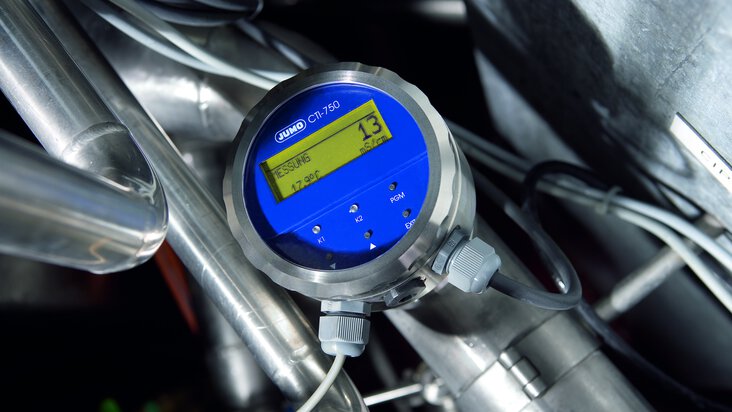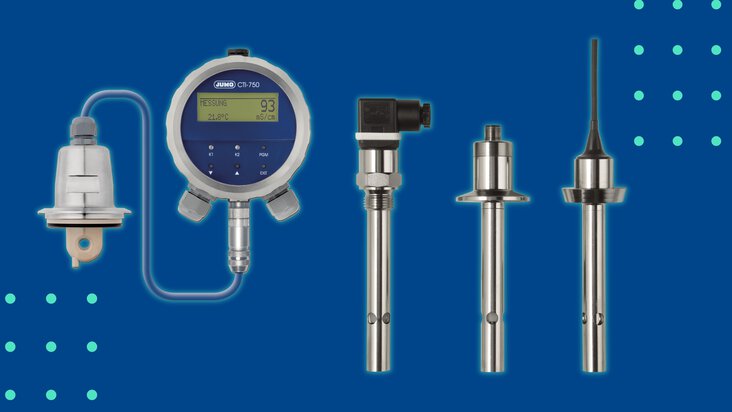

Conductivity meter – 15 solutions to the most common errors
The conductivity meter and, in particular, its measuring system age depending on the measuring conditions. Wear and contamination reduce its reliability and cause deviations. Faults can also be caused by incorrect use of the instrument. How do you look after a conductivity meter and get accurate measurements? Read on and you will learn about up to 15 possible causes and solutions to the most common faults!
Conductivity meter – principle of operation
A conductivity meter measures the conductivity of solutions. It is used g0 to determine the level of contamination or salinity and also in conductometric titrations.
Depending on the application and accuracy requirements, a distinction is made between 2-electrode and 4-electrode conductivity sensors and measuring targets that operate on the principle of electromagnetic induction.
Conductivity meter maintenance – types of faults
A conductivity meter, with the passage of time or when not used correctly, can indicate erroneous results. There can be various reasons for this, including a contaminated measuring surface, an uncalibrated sensor or a lack of control over the measuring conditions.
The fault may manifest itself through measurement values that are scattered or deviate from those of previous measurements. You must decide whether this is a normal phenomenon or whether intervention is required on the basis of documented data.
Scattered measurement values
Scattered measurement values by themselves do not yet indicate an error. The scatter is most often caused by normal variations in the water, the solution being measured or the measurement procedure. However, such values can also be caused, for example, by incorrectly set temperature compensation.

The measured values are scattered irregularly around the nominal value
Drifting measurement values
"Drift" describes the phenomenon of a constant increase or decrease in value. The cause can be contamination of the measuring cell - dirt and deposits increase the resistance at the electrodes, so that the current decreases.

The deviation between the measured value and the reference value increases with time
Sudden deviations
If the measurement values have changed significantly within a few minutes, the most likely cause is an electrical fault. Sudden deviations can also occur when the measuring cell is no longer immersed in water.

A significant deviation from the reference value occurs within minutes
Conductivity measurements with a conductivity meter – solutions to the most common problems
In the table below, we present the most common faults and their solutions. In the following paragraphs, we discuss some of the suggested measures in more detail. Read on to find out how to look after your conductivity meter and get the most accurate measurements possible.

Conductivity meters – fault detection and rectification
Calibration of the conductivity meter
First use of the conductivity meter
At the assembly stage, it is sufficient to adjust the cell constant according to the information given in the instructions. Test resistors are available to simulate a specific conductivity value in order to check the correct operation of the transmitter.
Note: During the test, the temperature coefficient must be set to 0%/°C!
Fixed cell calibration
When commissioning or maintaining a conductivity measurement system and when greater measurement accuracy is required, you should adjust the combination of target, cable and transmitter.
How often should I calibrate the conductivity meter?
The interval between two calibrations depends on the operating conditions in which the measuring cell is working. You should calibrate the instrument whenever you suspect that the results are ambiguous.
Cleaning the conductivity meter
If too large a deviation occurs in the standard solution during the test, the only effective means of rectifying the fault is to clean or replace the measuring vessel.
The cleaning agent used depends on the type of contamination:
-
In most cases, warm water with dishwashing liquid is sufficient to remove greasy or oily deposits.
-
Lime or iron oxide deposits can be removed with vinegar, citric acid or dilute hydrochloric acid.
Conditions for measuring conductivity
The ideal measurement requires knowledge of several important variables affecting the outcome.
Temperature coefficient/reference temperature
In addition to salt concentration, conductivity also depends on temperature. As only salinity is of interest, the conductivity meter compensates for the effect of temperature. It converts the measured conductivity value into a reference temperature. This means that the instrument does not indicate the actual conductivity value of the measured solution, but the value that the measured solution would have at the reference temperature. The indicated value remains the same when the temperature of the measured solution changes.

Error of indication in % with incorrectly set temperature coefficient, temperature coefficient of measured solution 2.0%/°C, reference temperature 25°C
Example
With an actual temperature of 75°C and a temperature coefficient of 1%/°C set on the device, the indicated value is approximately 50% too high compared to the actual value. Depending on the application, the reference temperature is set at 25°C or 20°C, whereby the conductivity values referenced to T = 20°C are always lower than those referenced to T = 25°C. For drinking water (the temperature coefficient is approx. 2.1 %/°C), the difference between the specified values is 10.5 %.

Difference in readings in % at different reference temperatures in the working device and in the reference device, together with deviation in the set point
Example with temperature measurements
With an actual temperature of 40°C and a temperature coefficient of 2.5%/°C set on the reference instrument, the working instrument indicates 20% more than the reference instrument. Each measured solution exhibits individual temperature characteristics. For ground water, surface water and drinking water, as well as municipal wastewater, the conductivity increases by approximately 2.1%/°C compared to the conductivity at T = 25°C.
The conductivity meter has a mathematical function for temperature compensation, i.e. converting the measured value to a value at the reference temperature. The temperature coefficient characterises the behaviour of the measured solution under the influence of temperature and must be set accordingly.

Examples of temperature coefficients
Example with temperature measurements
With an actual temperature of 40°C and a temperature coefficient of 2.5%/°C set on the reference instrument, the working instrument indicates 20% more than the reference instrument. Each measured solution exhibits individual temperature characteristics. For ground water, surface water and drinking water, as well as municipal wastewater, the conductivity increases by approximately 2.1%/°C compared to the conductivity at T = 25°C.
The conductivity meter has a mathematical function for temperature compensation, i.e. converting the measured value to a value at the reference temperature. The temperature coefficient characterises the behaviour of the measured solution under the influence of temperature and must be set accordingly.
If there is a deposit on the electrodes, the instrument only receives a reduced current signal and calculates a conductivity value that is too low. Therefore, make sure that the measuring cell is in perfect condition before measuring. You can determine this condition using a standard solution:
-
Set the temperature coefficient on the transmitter to 0%/°C.
-
Bring the standard solution to the standard temperature ±1°C (20°C or 25°C).
-
Rinse the measuring cell with the standard solution.
-
Measure the conductivity of the standard solution and compare with the nominal value of the standard solution.
-
If the deviation is too large, clean the electrodes of the measuring cell.
Polarisation
The measurement is made by means of an alternating voltage and the device increases in frequency as the conductivity increases. However, with 2-electrode cells, there is always a maximum conductivity above which polarisation cannot be completely eliminated, resulting in noticeably low readings.
To completely eliminate low readings, take measurements with an inductive conductivity meter or a 4-electrode measuring cell.

Conductivities of some typical standard solutions
JUMO conductivity meters
Take a look at our range of conductivity meters with a wide measuring range, which includes:
-
portable conductivity meters
-
laboratory conductivity meters
-
water conductivity meters
-
conductivity metera with ability to measure low conductivity
Check our offer of conductometers for multiple applications and good quality control!
- ${title}${badge}

